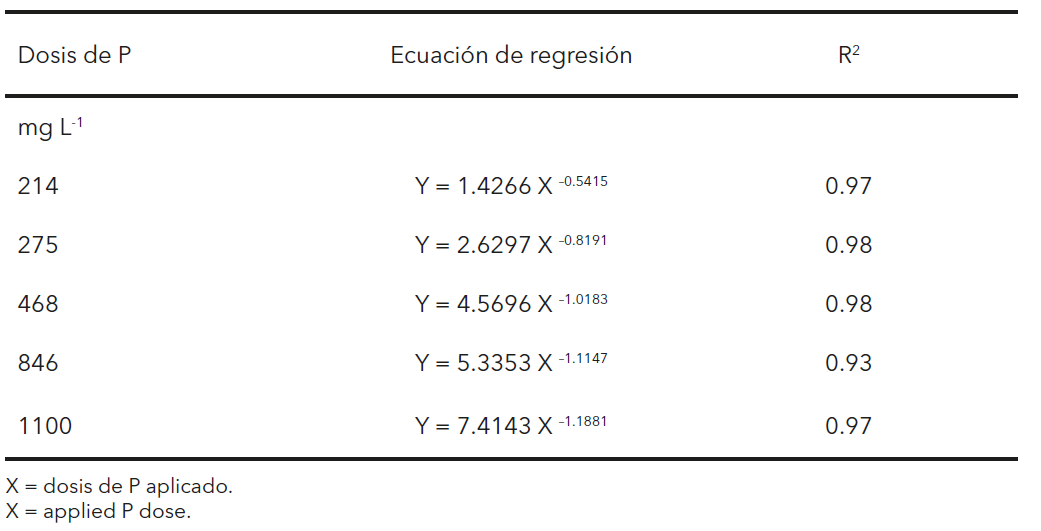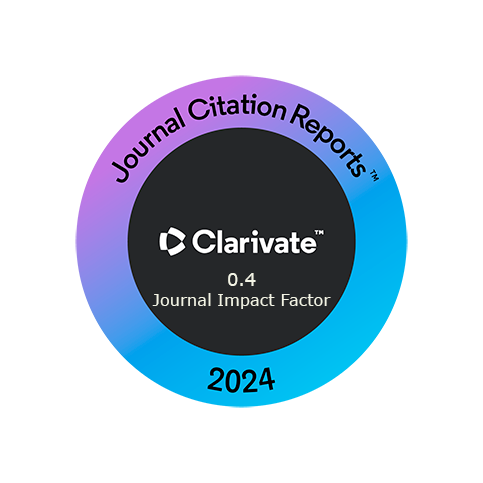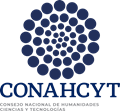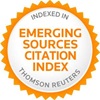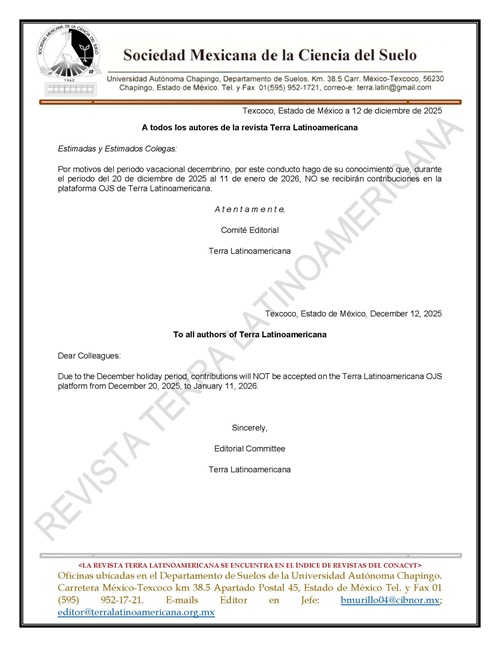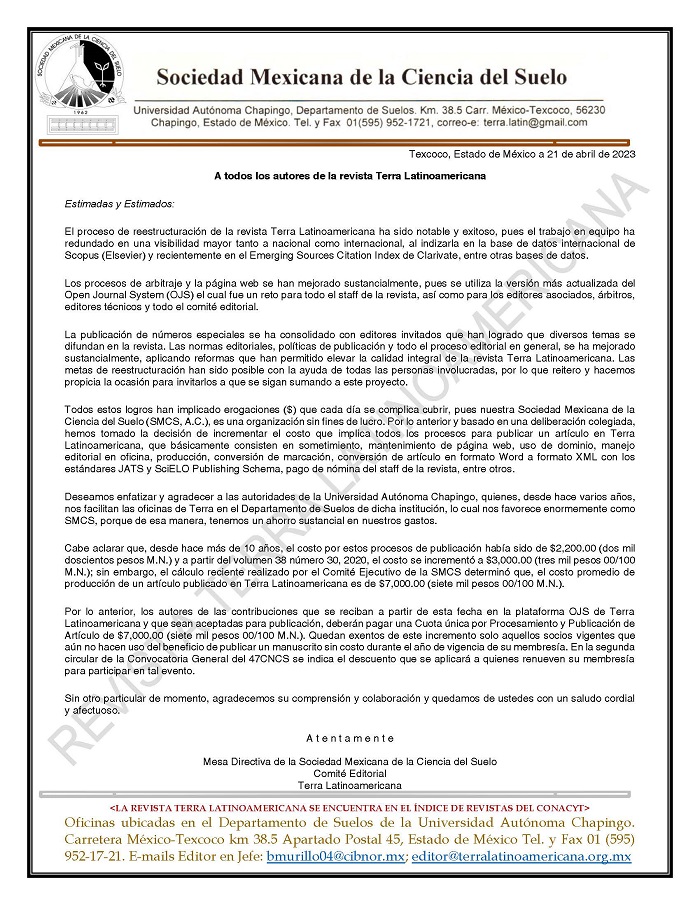Phosphorus Adsorption and Availability from Two Phosphate Sources in Vertisol in Northern Mexico
DOI:
https://doi.org/10.28940/terralatinoamericana.v43i.2152Keywords:
phosphate fertilizers, langmuir isotherm, phosphorus retentionAbstract
Phosphorus (P) is an essential nutrient for plant development; its study in soil is fundamental to optimize phosphate fertilizer management based on the specific soil characteristics and production systems. The present study aims to determine the maximum P adsorption capacity in Vertisol and evaluate the behavior of two phosphate fertilizers. Using Langmuir isotherm, the maximum P adsorption capacity in soil was 1080 mg kg–¹ with calcium triple superphosphate (SFT) and 1030 mg kg–¹ with phosphoric acid (H3PO4). Of the P applied as SFT, 30% was present as P-Ca and 28% as soluble P, while with H3PO4 these percentages were 40 and 31%, respectively. The two P sources showed dif ferentiated behavior when applied to soil. The P derived from H3PO4 was released quickly, reaching concentrations more than double of those obtained from SFT; however, at 24 hours post-application, regardless of the source or dose, 94% of the applied P was adsorbed, indicating the high adsorption capacity of the Vertisol soil. H3PO4 showed a greater initial availability of P, which could be advantageous in intensive production systems. In contrast, SFT shows a more gradual release, making it a viable option for base fertilization. Phosphorus adsorption capacity and availability in soil determine the selection of the most suitable phosphate fertilizer according to the production system.
Downloads
Publication Facts
Reviewer profiles N/A
Author statements
- Academic society
- Terra Latinoamericana
- Publisher
- Mexican Society of Soil Science, C.A.
